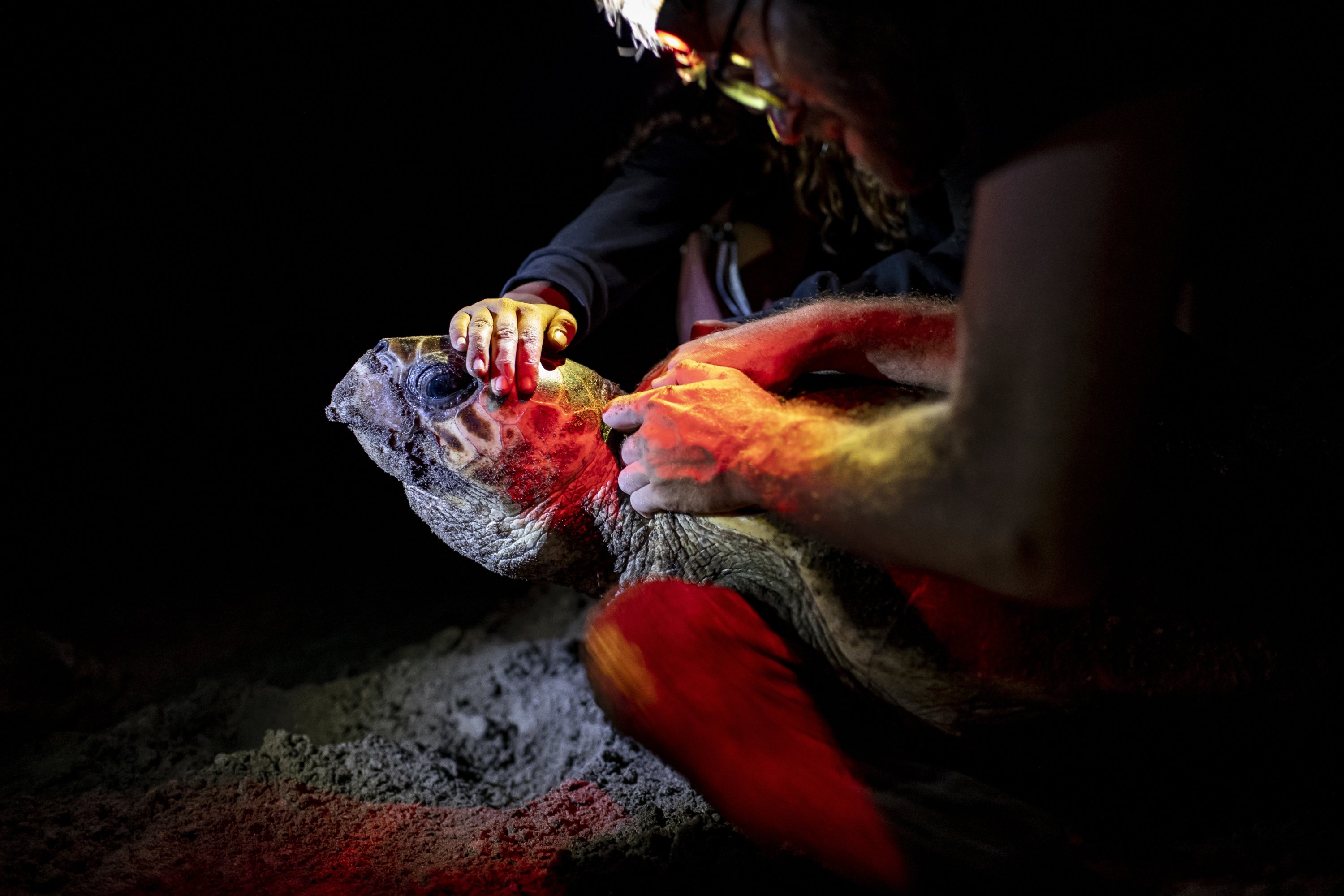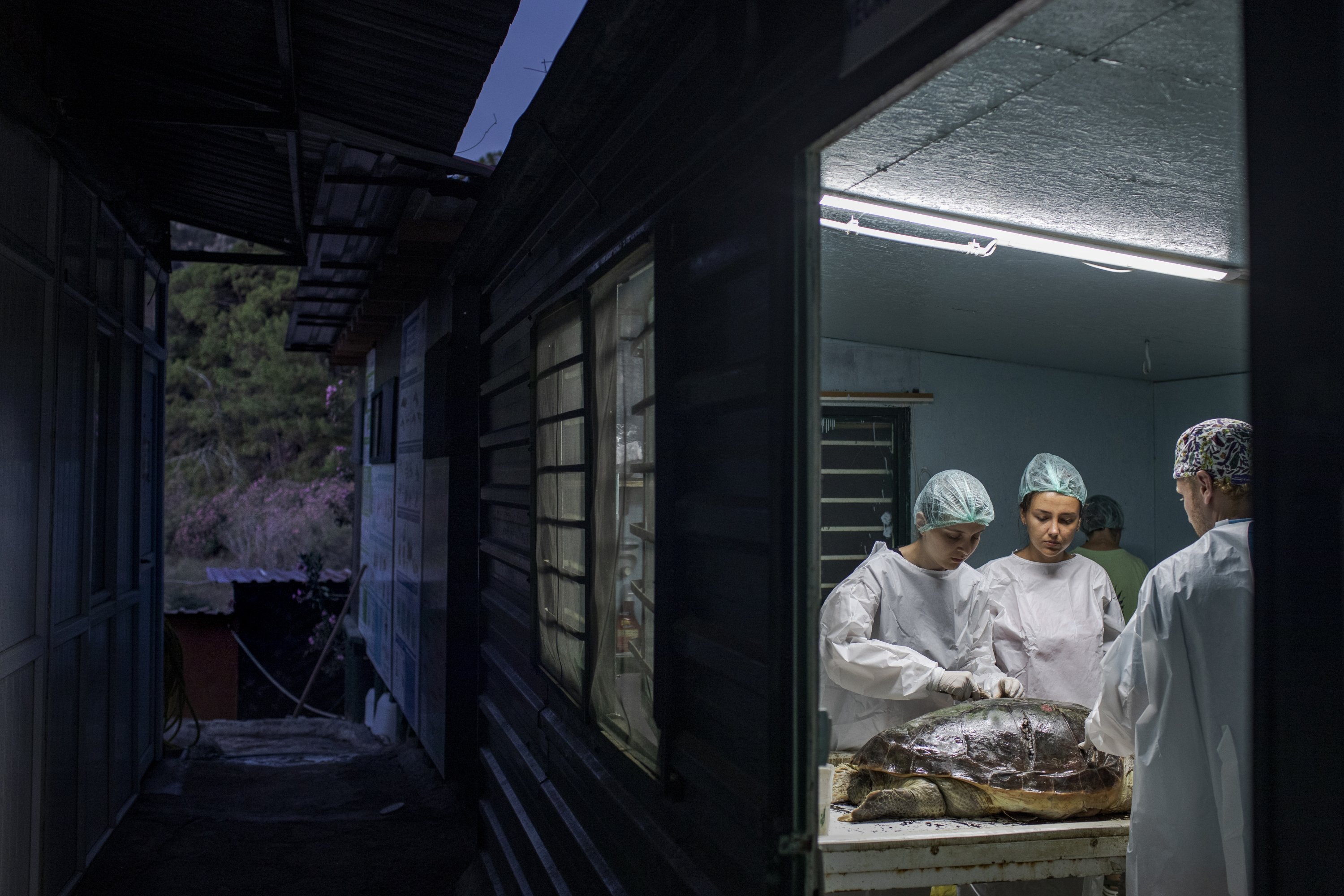© Turkuvaz Haberleşme ve Yayıncılık 2024
They swam the seas long before sailors followed their routes and discovered uncharted waters. With their existence dating back at least 110 million years, sea turtles have always survived the perilous conditions in their life cycle, but our modern age could be the death knell of the species.

From Turkey, one of their favorite breeding destinations, the turtles embark on new journeys across the Mediterranean Sea, a migration sometimes cut short by plastic pollution, oil leaks, fishermen using materials harmful to turtles, a general lack of public awareness of their frail living conditions and, last but not least, climate change.
In the past two years alone, 55,734 sea turtles have died from environmental pollution along the coast of Samandağ on Turkey’s Mediterranean coast. Despite intensified conservation efforts, they remain an endangered species.

There are seven known sea turtle species in the world and Turkey is home to Caretta carettas, or loggerhead sea turtles, and green turtles who choose the country’s Mediterranean beaches for nesting. Their habitats stretch from the southwestern tip of the Mediterranean coast in Iztuzu, Muğla to Samandağı further east in the province of Hatay.
The government and animal protection groups work to protect the turtles, which remain under the constant watch of volunteers. The Sea Turtles Research, Rescue and Rehabilitation Center (DEKAMER) is among the main organizations working for their conservation. DEKAMER President Yakup Kaska said their work is concentrated in Iztuzu, where turtles have been monitored since 1988 along the 4.5-kilometer (2.7-mile) coast. “Some 50 mother turtles were being monitored back then and there were about 150 nests. Today, we have some 750 nests here,” he told Anadolu Agency (AA) on Friday.
Their numbers thrived over the years but in the meantime, they also succumbed to diverse dangers. Dozens of injured turtles were treated at DEKAMER in the past few years but only 60% of them survived the injuries and illnesses they suffered along their migration route or in their breeding grounds.
Digestion of plastic bags is one of the most common causes of death in sea turtles as they often mistake it for food. Plastic bags block their digestive system, eventually leading to gas buildup and forcing them to surface or leaving them unconscious and washing ashore. Surfacing multiplies the risk, Kaska said, pointing out dangers from speedboats that can “crack or cut the shells of the turtles.” The closer they get to the surface, the closer they are to danger, including sharp fishing lines that sever the frail flippers of the turtles. "One reckless act by human beings may injure them," Kaska warned.

In the past two years, 231 turtles washed ashore dead across Turkish coasts, according to DEKAMER data. Necropsies of 87 turtles in Turkey last year found 20% among them suffered from problems that stemmed from the consumption of plastic materials. In 2020, 32 turtles were found dead on different dates after consuming plastics.
Most of the turtles under DEKAMER care are Caretta carettas, while Samandağ is home to green turtles, whose number of nests exceed 1,000 along the coast. According to 2020-2021 data, Iztuzu hosted 1,492 Caretta caretta nests, and there were 3,243 green turtle nests in Samandağ. An average of 130,000 baby turtles emerge from those hatcheries, but only one in 1,000 can make it to the adulthood phase in their life.
